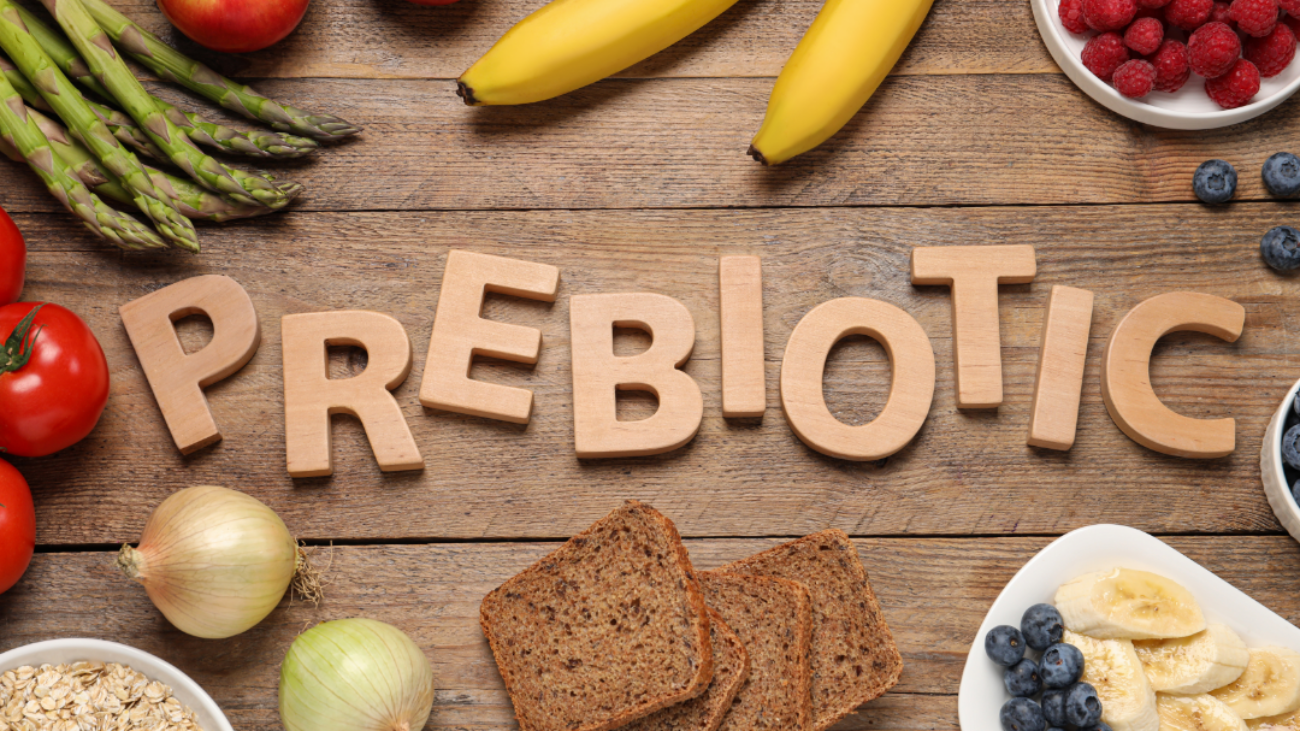Prebiotics are non-digestible foods or food ingredients, which enter our colons un-altered by the digestive process, serving as an energy and growth source for the beneficial bacteria that live in our large intestine. In other words, prebiotics are food for the friendly bacteria in your intestines.
Types of Prebiotics
There are numerous different prebiotics currently on the market. In the US, the most common ones in use include:
- Inulin, sometimes also known as inulin fiber
- Fructo-oligosaccharides (FOS)
- Galacto-oligosaccharides (GOS)
- Lactulose
These substances have been the subject of numerous studies. Most of this research focuses on inulin, FOS and GOS and these substances, with their relatively long history of safe use, are now generally regarded as safe1,2.
More recently new prebiotics have become available from Japan. These include:
- Isomalto-oligosaccharides (ISO)
- Soy-oligosaccharides (SOS)
- Xylo-oligosaccharides (XOS)
- Lactosucrose (LS)
- Pectic-oligosaccharides
These newer compounds have been studied to varying degrees in laboratory test tubes (in vitro), mainly in animal feeding studies. These novel prebiotic substances are not widely available.
What Are The Advantages of Prebiotics?
 Garlic & Onions: Good Sources of Prebiotics |
Prebiotics feed the friendly bacteria in our large intestine and so help good bacteria to survive and thrive. The general consensus is that prebiotics help to improve the intestinal probiotic balance in our intestines by feeding the probiotic bacteria. In this way prebiotics are thought to be indirectly beneficial to our health.
Prebiotics not only serve as nourishment, strengthening our all important probiotic intestinal flora, they also slow down the activity, growth and metabolism of the “unhelpful” microbes, with which they have to compete for survival.
Prebiotics are also:
- Easy to store. Most do not require refrigeration
- Readily available in natural forms in your local grocery store
- Excellent value for money
- Easy to include in your normal diet – in fact you may already unknowingly be eating several excellent sources of prebiotics!
What Are The Disadvantages of Prebiotics?
In terms of disadvantages, a side effect of prebiotics is that you may experience temporary gastro-intestinal problems such as increased gas and/or bloating when you begin taking them or if your intake of these substances is particularly high. One way to avoid such a scenario is to begin by taking only a small amount of prebiotic and then gradually to increase your intake over a number of weeks.
In theory prebiotics are supposed to feed only friendly bacteria. However, in cases where the digestive flora has become unbalanced, they also appear to support the growth of unhelpful bacteria. If you know your digestive flora is unbalanced or are experiencing symptoms of food intolerance, intestinal dysbiosis or an overgrowth of Candida Albicans, be advised that prebiotics may exacerbate your symptoms, worsening your overall situation. Indeed, Gastroenterologist, Professor John Hunter, of the Gastroenterology Research Unit, Addenbrookes Hospital, UK, advises his food intolerant patients to avoid prebiotics3.
Where Can I Find Prebiotics?
If you are keen to try prebiotics, you can find them in:
Natural Foods
Many natural foods are rich in prebiotics AND are very easy to find at your local grocery store! These include:
Vegetables:
- Tomatoes
- Sunchokes or Jerusalem artichokes
- Onions
- Chicory
- Greens (especially dandelion greens but also spinach, collard greens, chard, kale, mustard greens, and others)
- Asparagus
- Garlic
- Leeks
Fruit:
- Berries
- Bananas
Whole Grains:
- Wheat
- Oatmeal
- Barley
- Flaxseed
Legumes:
- Lentils
- Kidney beans
- Chickpeas
- Navy beans
- White beans
- Black beans
And breast milk!
Including natural prebiotic-rich foods in your diet is the most cost effective way of adding prebiotics to your diet. Naturally-occurring prebiotics in food are also stable and they survive the cooking process. This makes them really easy and convenient to include in your diet.
Processed Foods
Increasingly prebiotics are being added to many types of processed foods such as commercial yogurt and dairy drinks, nutrition and meal replacement bars, “green foods”, functional wafers, cereals and cereal bars as well as infant foods and formulas. You can buy many of these foods at your local grocery store.
Be aware, however, that many of these foods may be high in sugar and/or salt and so may not always be as healthy as they first appear.
Also many processed foods such as canned beans contain prebiotics but may not be labeled as such.
Buying specific prebiotic processed foods can be an expensive way of getting prebiotics into your diet.
Nutritional Supplements
Prebiotics can also be purchased as a supplement, either as a stand-alone product such as a pure fructooligosaccharide (FOS) supplement or as an enhancement to a probiotic supplement. Probiotics with added prebiotics are easy to find. Examples include Culturelle and HMF probiotics as well as the high potency probiotics Therbiotic Complete (Klaire Laboratories) and Maximum Support Probiotic Formula (Brain Child Nutritionals).
Remember that prebiotics work in conjunction with probiotics so to get best benefit take a probiotic too. And last of all, a final word about prebiotics… there are no official guidelines as to the optimum daily dose of prebiotics so if you do decide to try prebiotics, be sure to consult your physician before beginning to ensure your intake is sensible for your situation.

